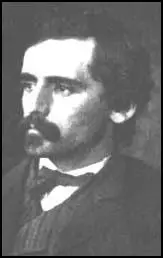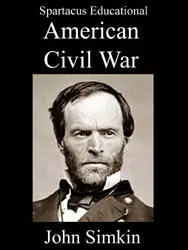Michael O'Laughlin

Michael O'Laughlin was born in Baltimore, Maryland, in June 1840. As a child he became friends with John Wilkes Booth, who lived in the same street as the O'Laughlins.
O'Laughlin worked in the ornamental plaster trade before joining the Confederate Army at the beginning of the American Civil War. He left the army in June, 1862 because of poor health, and returned to Baltimore where he worked as a clerk in brother's feed business.
In 1864 John Wilkes Booth devised a scheme to kidnap Abraham Lincoln in Washington. The plan was to take Lincoln to Richmond and hold him until he could be exchanged for Confederate Army prisoners of war. Booth persuaded O'Laughlin to join the plot. Others involved included George Atzerodt, Lewis Powell, John Surratt, David Herold and Samuel Arnold. Booth decided to carry out the deed on 17th March, 1865 when Lincoln was planning to attend a play at the Seventh Street Hospital that was situated on the outskirts of Washington. The kidnap attempt was abandoned when Lincoln decided at the last moment to cancel his visit.
When President Abraham Lincoln was assassinated, O'Laughlin was living in Baltimore. On 17th April, 1865 O'Laughlin gave himself up to the police. He confessed to his role in the plan to kidnap Lincoln but denied any involvement in the conspiracy to murder the president.
On 1st May, 1865, President Andrew Johnson ordered the formation of a nine-man military commission to try the conspirators. It was argued by Edwin M. Stanton, the Secretary of War, that the men should be tried by a military court as Lincoln had been Commander in Chief of the army. Several members of the cabinet, including Gideon Welles (Secretary of the Navy), Edward Bates (Attorney General), Orville H. Browning (Secretary of the Interior), and Henry McCulloch (Secretary of the Treasury), disapproved, preferring a civil trial. However, James Speed, the Attorney General, agreed with Stanton and therefore the defendants did not enjoy the advantages of a jury trial.
The trial began on 10th May, 1865. The military commission included leading generals such as David Hunter, Lewis Wallace, Thomas Harris and Alvin Howe and Joseph Holt was the government's chief prosecutor. Mary Surratt, Lewis Powell, George Atzerodt, David Herold, Samuel Mudd, Michael O'Laughlin, Edman Spangler and Samuel Arnold were all charged with conspiring to murder Lincoln. During the trial Holt attempted to persuade the military commission that Jefferson Davis and the Confederate government had been involved in conspiracy.
Joseph Holt attempted to obscure the fact that there were two plots: the first to kidnap and the second to assassinate. It was important for the prosecution not to reveal the existence of a diary taken from the body of John Wilkes Booth. The diary made it clear that the assassination plan dated from 14th April. The defence surprisingly did not call for Booth's diary to be produced in court.
During his trial the prosecution claimed that O'Laughlin had been given the task of killing General Ulysses S. Grant. However, O'Laughlin's lawyer, Walter S. Scott, was able to show that his client was drinking with friends on the night of the murder and had made no attempt to seek out Grant.
On 29th June O'Laughlin was found guilty of being involved in the conspiracy to murder Lincoln and was sentenced to life imprisonment. Mary Surratt, Lewis Powell, George Atzerodt and David Herold were also found guilty of the crime and hanged at Washington Penitentiary on 7th July, 1865.
O'Laughlin was sent to Fort Jefferson with fellow conspirators Samuel Mudd, Edman Spangler and Samuel Arnold. Michael O'Laughlin died of yellow fever on 19th September, 1867.
Primary Sources
(1) Ben Pittman, The Assassination of President Lincoln and the Trial of the Conspirators (1865)
O'Laughlin is a rather small, delicate-looking man, with rather pleasing features, uneasy black eyes, bushy black hair, a heavy black mustache and imperial, and a most anxious expression of countenance, shaded by a sad, remorseful look.

